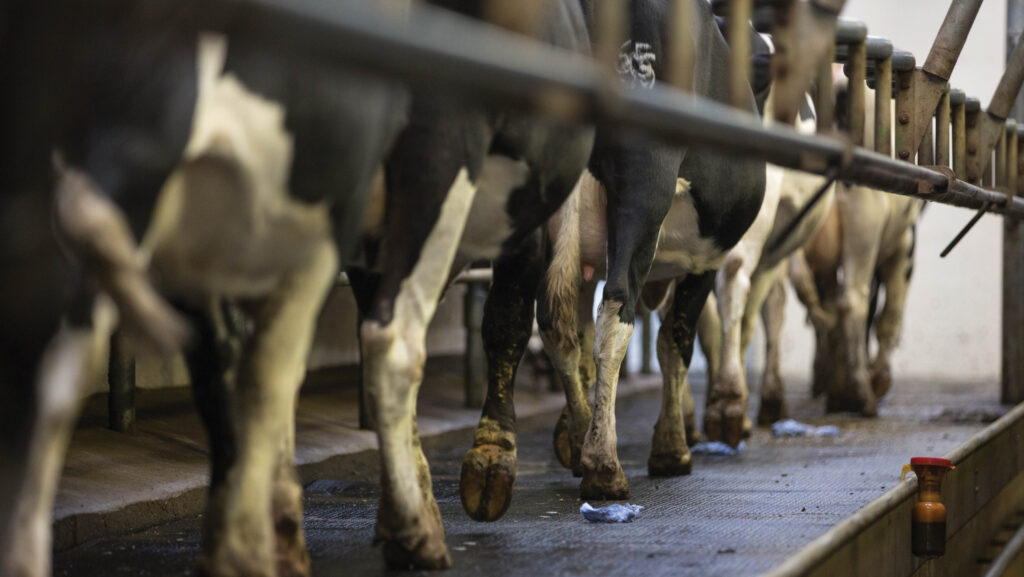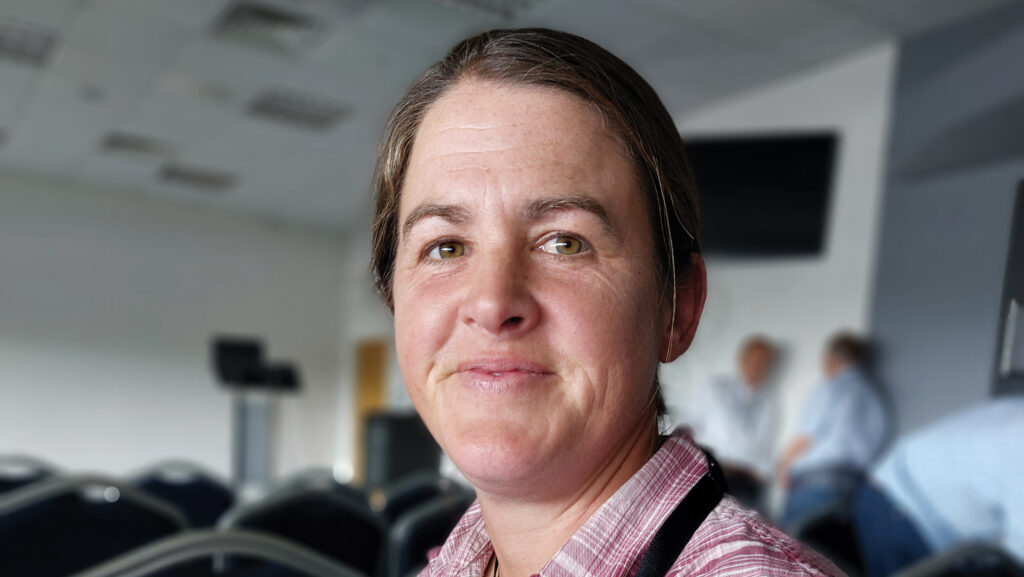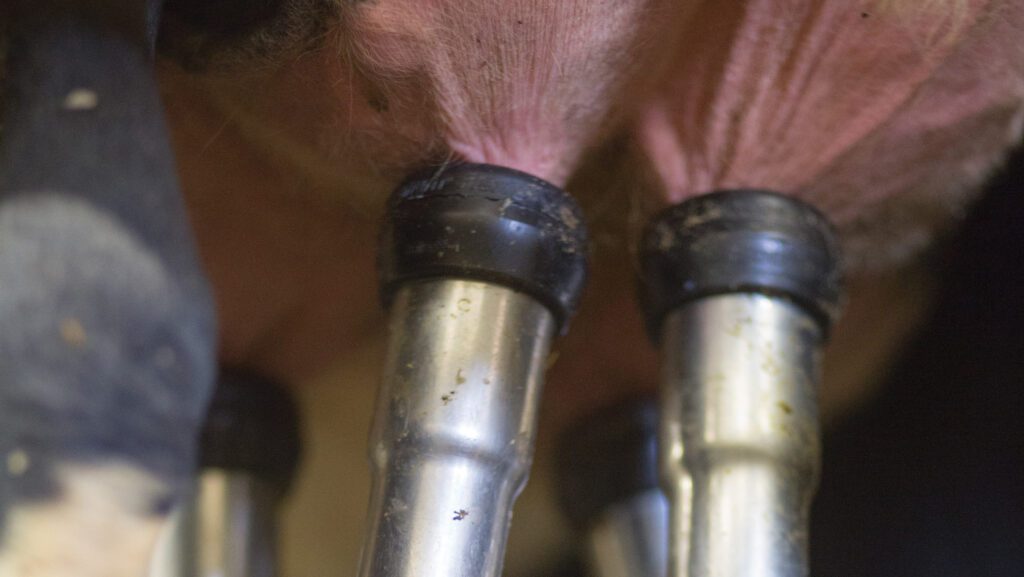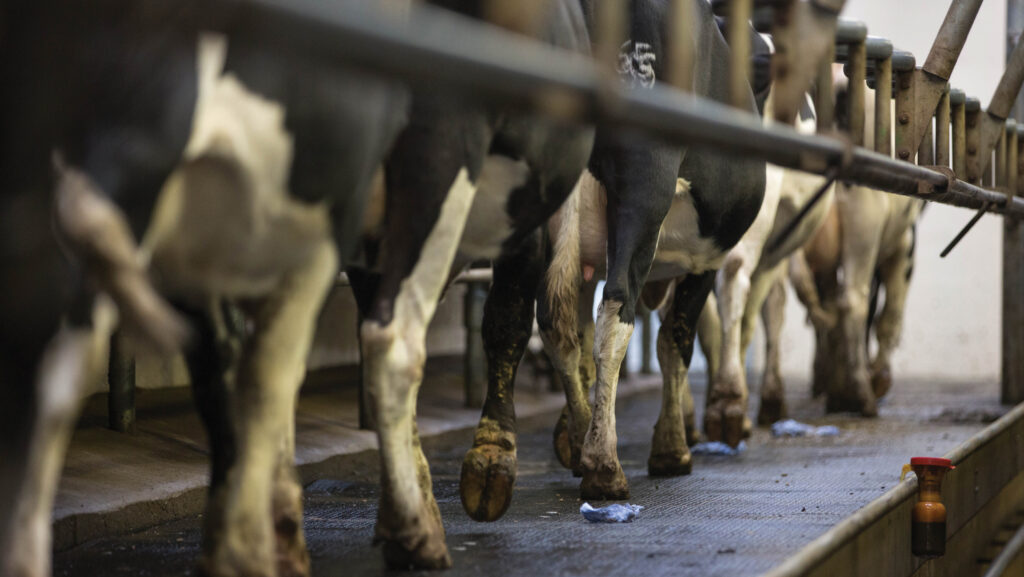Dairy winter housing upgrade helps cut new infection rates
 © Tim Scrivener
© Tim Scrivener Taking time to evaluate low mastitis rates but high spring cell counts in their 250-cow spring-calving herd prompted Emmie Bland and her husband Johnny to reconsider winter housing arrangements.
The 5,700-litre herd, at Arnside Tower Farm, Silverdale, Lancashire, produces 450kg of milk solids a year, and 90% of cows calve within the first six weeks of the block in February and March.
The herd paddock grazes day and night until drying off on 1 December.
See also: Three-row v two-row sheds: How do they influence performance?
With limited housing, this enterprising couple had saved themselves transport costs – and stress on the cows – by walking the herd seven miles each winter (taking two and a half hours) to spend their dry period on two neighbouring farms.
However, these gains were offset by poor-quality cubicles and ventilation – even for small crossbreds with a short housing period.
Mastitis control plan
Emmie, who is also a vet, told the British Mastitis Conference the old facilities “weren’t great” and the herd’s peak in cell counts had triggered penalties on the milk cheque.
In 2023, she worked through the mastitis control plan to look in detail at their farm facilities and performance, together with their milk recording data.
She and Johnny also made time to review the milking routine to identify areas for change.

Emmie Bland © MAG/Shirley Macmillan
“In 2023, we averaged 10 cases of mastitis for every 100 cows. Our bulk cell count averaged 160,000 cells/ml, but was over 300,000 cells/ml in spring; 25% of cows had high cell counts at their first milk recording against a target of less than 10%,” she said.
“The pattern analysis tool showed we had environmental-dry-period- and environmental-lactation-origin mastitis, even though we were drying off at low yields, using a vet and vet tech team, and doing all cows in a day.”
Changes made
To rectify the housing issue, the Blands found a neighbour with a well-maintained, well-ventilated shed where the whole herd could be wintered and managed consistently.
Other adjustments included installing rubber mats in the parlour to help cow flow and cutting the lag time between teat prep and cups-on to 90 seconds.
“We found Dairy NZ videos very good as a training resource for our staff,” Emmie said.
“Then we employed a new herdsperson in 2024. She is self-motivated, meticulous and has a drive to keep Bactoscan and cell counts down.”

© Tim Scrivener

© Tim Scrivener
Foremilking and teat spraying are now done uniformly.
Automatic cluster remover strings were altered to allow units to sit better and not hit the ground, and 15cm-wide concrete panels were fitted in front of the mangers to encourage cows to stand slightly further back.
“Narrowing the standings improved cow cleanliness and helped cow positioning,” Emmie explained.
“Now we can get 18 cows in a side, milking time is quicker – two and a half instead of four hours – Bactoscan is under control and there is a calm atmosphere in the parlour.”
Fall in infections
Since making these changes, the dry period new infection rate has fallen from 26% in 2023 to 11%, and was 12% earlier this year.
There was no increase in cell counts towards the end of lactation last year, which meant they could drop to 10-in-7 milking in September, and go once a day in October before drying off.
“Our lactation new infection rate was 8-9% in 2023 and 6% in 2024. Our cell count averaged 141,000 cells/ml in 2024,” Emmie said.
“We’ve got off to a good start in 2025 as new infection rates are comfortably below 5% and our average cell count is below 200,000 cells/ml”, with greater job satisfaction among the farm team and more time for maintenance jobs at the end of lactation.
Emmie Bland was speaking at the British Mastitis Conference, Worcester, on 18 June 2025.
